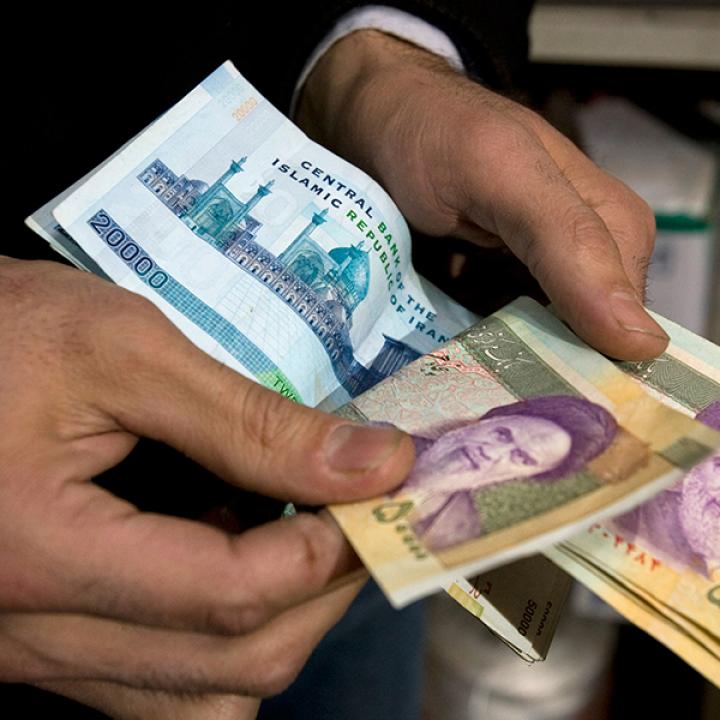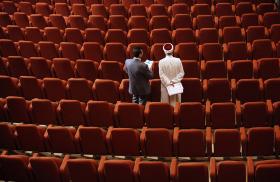

The president is proposing de facto cuts to salaries and subsidies as well as more money for the military, while avoiding the tough reforms Iran’s economy needs.
On January 11, President Ebrahim Raisi submitted his budget proposal to the Majlis for the Iranian year 2023/24. Drafted amid the most severe protests the Islamic Republic has faced since its establishment in 1979, the proposal includes no economic olive branches to the people and avoids structural reforms that could help rein in inflation and fuel growth.
No Consensus for Tough Choices
Raisi’s election in 2021 cemented hardline rule across all power centers in Iran, and some observers expected that unified control would yield more cohesive foreign and domestic policymaking. Initially, it did: for example, Raisi’s team rolled out a largely effective campaign to import foreign COVID-19 vaccines and suppress the outbreak. Yet the hardline elite have fractured on other key issues such as resurrecting the 2015 nuclear deal and responding to anti-regime protests. On the economic front, chaotic implementation of reforms to the foreign exchange subsidy system last May helped drive inflation to record levels.
The government could have used the budgetary process to build consensus around tough cuts and reforms needed to stabilize the economy. The rial has lost more than 20% of its value against the dollar since September, when mass protests began and the nuclear talks essentially collapsed. The government used many of its usual tools to restrain the fall: arresting currency traders, pledging progress on nuclear talks, hinting that more foreign exchange would be released from abroad, and removing the head of the Central Bank. This helped avoid a sharper selloff, but the rial remains weak.
Despite this crisis, Raisi’s government has failed to work constructively with the Majlis on these issues, instead spending much of its energy clashing with parliamentarians, some of whom are undoubtedly eyeing the 2024 election cycle. Raisi delivered the budget a month late and has been mired in fights over the document’s sequence and structure, with little public attention paid to its substance.
Overly Optimistic Revenue Estimates
In a January 10 speech to lawmakers, Raisi stated that the budget’s main goals are fiscal discipline, liquidity management, inflation reduction, and stable, efficient, “justice-oriented” growth. The total proposal of 21.6 quadrillion rials (about $52 billion at the free market exchange rate) represents a 42% increase in nominal terms compared to the previous budget and will likely keep pace with inflation, which the IMF expects to hit 40%. The budget does not capture the full scope of government activity—authorities often rely on additional funding methods such as requiring banks to lend to certain groups at discounted rates. Yet it does provide an indication of the country’s fiscal direction over the next year.
In order to make ends meet, the new budget relies on revenue expectations that will likely prove overly optimistic. According to state media, the government predicts that Iran will export 1.4 million barrels per day (bpd) of oil at an average price of $85 per barrel and the equivalent amount of natural gas. This forecast is unrealistic—Tehran predicted the same volume last year and missed the target, with organizations such as TankerTrackers, Vortexa, Kpler, and United Against Nuclear Iran estimating its crude and condensate exports for January-November 2022 as falling between 860,000 and 1.1 million bpd. The government’s forecast also contradicts the estimate made by the Majlis Research Center, which predicts exports of approximately 1 million bpd. The difference almost certainly reflects an overly optimistic assessment of current conditions, not any expectation of international sanctions relief.
The government’s price target is more reasonable—energy market analysts and investment banks forecast that Brent crude prices will range between $80 and $100 per barrel in 2023. In addition, revenue will be converted at 230,000 rials to the dollar, the same value as last year.
Iran will probably fall short on bond issuances as well. The budget forecasts a real increase of about 28% in bond sales—an ambitious target given that the government has struggled recently to attract interest in its auctions. Tax revenue expectations are more realistic, with a 5% real increase. (These percentage increases account for inflation of 40% and are calculated in comparison to the previous budget as it was adopted, not to the government’s actual fiscal performance.)
Underperformance in oil and bond sales will likely create a financing gap at the center of Iran’s budget, a recurring phenomenon. In turn, sizable budget deficits tend to fuel inflation as the government leans on direct or indirect Central Bank borrowing to pay its bills. This will likely be the case once again.
Slashing Salaries, Increasing Military Spending
Raisi proposed increasing the salaries of government workers by only 20%, which constitutes a cut given high inflation. Cash subsidies will not increase with inflation either, significantly eroding their value. These figures will probably come to the fore when the Majlis reviews the budget, and lawmakers may adjust them. Raisi proposed a similarly insufficient subsidy increase last year, and the Majlis revised it upward.
Spending on development (e.g., infrastructure investment) is also scheduled to fall by 10% in real terms. The government has not come close to meeting its development spending targets this year, so further reductions will hurt even more.
Defense spending has been increased about 5% in real terms. Although defense entities have other sources of revenue such as smuggling, the official budget figures provide a useful benchmark. Entities receiving increases include the Islamic Revolutionary Guard Corps (IRGC), Law Enforcement Command, Ministry of Defense and Armed Forces Logistics, and Armed Forces Social Security Organization. The regular army (Artesh) and Armed Forces General Staff face cuts.
Raisi also continued the practice of allocating some oil export revenue directly to the defense sector, separate from the regular budgetary allocations. Specifically, about $3.3 billion will be allocated to the Defense Ministry from oil sales next year, less than the amount allocated this year (about $5 billion). By directly connecting oil sales to military purposes, the regime is inadvertently giving Western governments a golden opportunity to steer more entities away from participating in Iran’s oil sector.
Finally, the government has proposed tripling the budget for the Organization of Defensive Innovation and Research (SPND). Previously led by the late IRGC and nuclear official Mohsen Fakhrizadeh, SPND is a successor to the AMAD Plan, Iran’s past nuclear weapons program. This major increase may be intended as a signal to the West amid the breakdown in nuclear talks and advancements in the regime’s uranium enrichment activities. In contrast, the Atomic Energy Organization of Iran, which oversees the civilian nuclear program, faces a 4% cut.
Complicated Outlook
The budgetary process now turns over to the Majlis, where lawmakers have already expressed frustration that Raisi submitted the proposal without the accompanying Seventh Development Plan, which is more than a year overdue. Members have also hinted that their review may not be completed before the new Iranian year begins on March 21. If so, short-term spending bills would need to be passed, creating additional headaches.
Observers should keep a watch for any edits the Majlis makes. Parliament often increases military spending above what the government asks. Lawmakers may also be keen to increase social spending and salaries this year given widespread popular anger. Yet finding resources for these extra expenditures will be very challenging. Budget season in Tehran is often turbulent, but this year’s edition will be particularly volatile given the backdrop of public unrest.
Henry Rome is a senior fellow at The Washington Institute.



